I spent some time at the Earvana booth at NAMM, and even in that infernal racket you could hear that it really worked. I've also spent some time at a Taxi Road Rally with Buzz Feiten. To be clear, there were about thirty other people, and Skunk Baxter was demo'ing the Buzz Feiten "system" so it wasn't like anybody was trying to yank the guitar out of his hands. ("C'mon, man! Let me try it! I've almost got "Sweet Child of Mine" dialed in!") But I heard it with my own eyes, and it works. The reason for the distinction is because I honestly think they sound the same (gasp!). Because they do the same thing: they make the nut reflect the saddles. Buzz told me/us that personally/collectively. Imagine putting a mirror at the 12th fret and looking at the saddles, then turning it around and looking at the nut (sounds naughty, don't it?) the more you can make them resemble each other, the more fighting chance each string has of compensating for our deeply-flawed "equal" temperament. The saddles on every Strat are in the same place, or at least should be. Here's a very groovy picture of David Gilmour's:
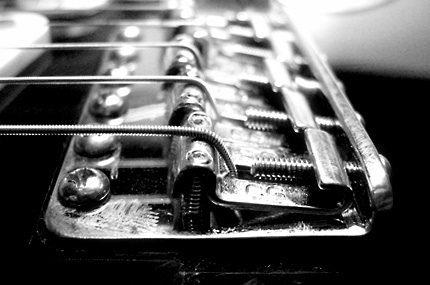
Less artistic but way more informative is this example, courtesy of the internet, which is never wrong:
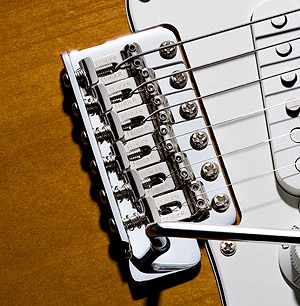
A very cruel man named Floyd Rose taught me about the discrepancy between the D and G. The "unsolvable equation." They're right in the middle of everything, side by side, one's a 5th of the other and the other is a fourth of the ... well, you know what I mean. You'd think they'd be friends, but no. The Floyd Rose bridge required elaborate rituals involving tiny parts and mysterious incantations to adjustment the saddles just a hair (you know what kind), but if any of the parts showed the slightest wear it had to be replaced. It was a musical form of water-boarding, and all so Junior could do his best Eddie Van Halen dive-bombs for the neighborhood(s). I didn't understand why until I saw Buzz Feiten explained the mirror thing. His nut has undergone revisions over time (so has mine), but here are some examples:
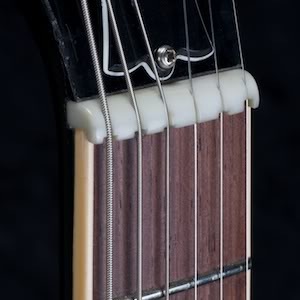
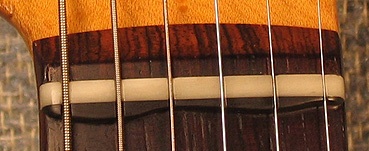
David Gilmour's Strat(s):
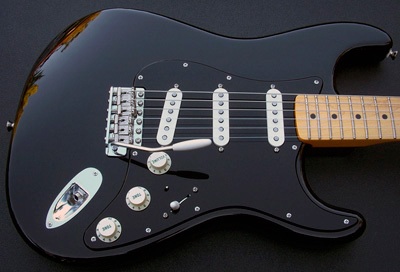
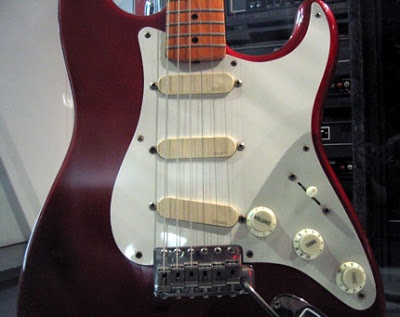
Earvana:
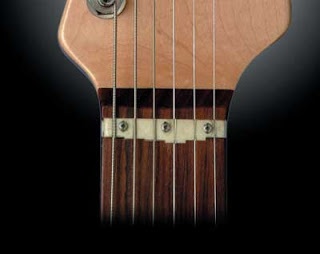
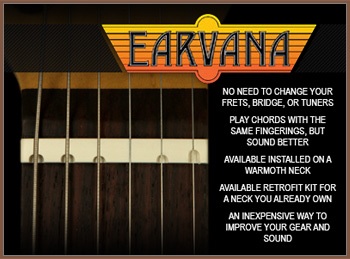
See? Greg knew I wanted to trot out the squiggly frets, but I think it's the greatest visual aid to understanding the wrestling match between the three factors involved in playing "in tune" and what a loose concept that actually is (Blame JS Bach. It's his fault, and Greg will back me up on that.)

Finally, a visual explanation of the discrepancy between the D and G saddle positions. It just never occurred to me that the saddle positions were trying to compensate for something happening at the "House of the Rising Sun" end of the neck. I think it's called first position (I think of it as "around the first two dots"). The only straight fret is at the octave, and the farther away from the octave in either direction, the wonkier the tuning - but the more you try to compensate by changing the length or position (by saddle or compensated nut), the more it changes things somewhere else. The "E-centric" nature of equal temperament is apparent in the fact that the frets for both E strings are pretty much the same, and their frets seem least prone to squiggliness. By that I mean they're in the same place as unsquiggled guitars. It's an mystery in a taco shell, wrapped in a soft flour enigma. Or something like that. I should ask Jimmy Johnson to explain it, the next time the subject of temperament comes up. His father was a piano tuner, y'know. Sorry I lost my temper. (I'll ask the Foghorn for a compensated nut. That usually does the trick.)